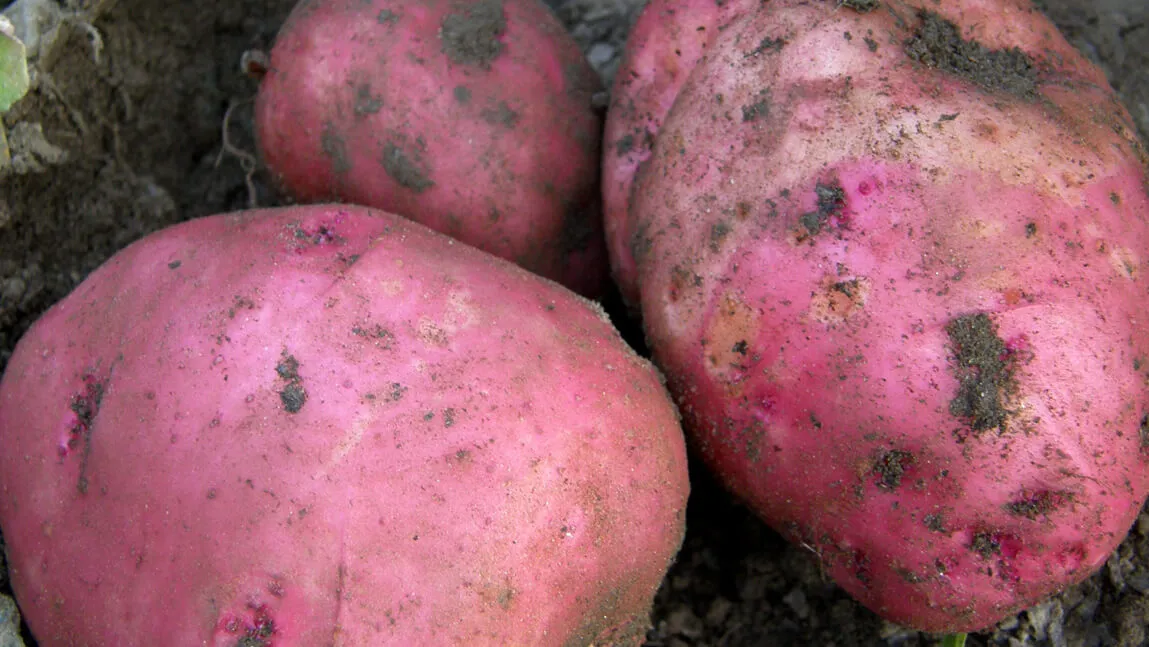By Bonnie Kirn Donahue
Extension Master Gardener
University of Vermont
Starting potatoes in the spring is one of the greatest treats you can do for your future self. Home-grown potatoes are fresh, silky and flavorful.
Potatoes are grown from seed potatoes. Choose ones about 1-2 inches wide and long with 1-2 eyes each. They often come in multiple varieties and in an array of colors, including shades of white, yellow, blue or red. You can purchase these from local garden centers.
The best varieties are resistant to diseases such as potato scab. This disease is caused by a unique soil-borne bacteria, Streptomyces scabies, which causes dark, dry patches on the potato skin.
Although a few cultivated species are resistant to late blight, a devastating disease, some new, genetically modified cultivars may offer some resistance. Late blight, caused by a fungus-like organism that can infect potatoes and tomatoes, is spread by air-borne spores in cool, wet weather. Once in a field, it can spread rapidly, destroying foliage and causing tubers to rot.
Luckily, this disease does not overwinter in Vermont. The pathogen blows in on storm fronts from southern areas. Due to recent weather patterns, we have not seen the disease in the state for the past three years.
You may find information on disease resistance where you purchase seed potatoes, or you can look the variety up online to see how it performs. Trial and error is another great way to learn what works in your own garden.
Potatoes grow best in well-drained soil that's slightly acidic with a pH of 5.3 to 6.0. To determine the pH of your soil, do a soil test before planting. You can get your soil tested through the University of Vermont Agricultural and Environmental Testing Lab.
Potatoes are versatile. They can be grown in the ground, raised beds or even containers. Select containers with holes for drainage and enough space to grow a few potato plants. Fabric planter bags with edges that can be unfolded throughout the season can be useful when adding soil.
Plant potatoes 2-4 weeks before the last frost. The new plant will grow from the eye, so plant with the eye facing up. Space about 18 inches apart and 4 inches deep. Allowing more space between the potatoes will help maintain airflow to minimize foliar fungal diseases such as early blight.
Potatoes turn green in the sun, making a chemical called solanine, which makes potatoes bitter and can be toxic if eaten in large quantities. To prevent this, add soil up to an inch below the lower leaves once your potato plants reach 6-8 inches in height. Repeat this practice every 2-3 weeks until harvest.
Your plants need about 1 inch of water a week. Watering in the morning will give the foliage plenty of time to dry during the day. Using drip irrigation also will help minimize foliar diseases.
Potatoes are ready to harvest at the end of the growing season when temperatures start to drop or when plants begin to brown and dry out. You can harvest earlier although potatoes may be small and may not keep as long.
Use your hands as much as possible when digging potatoes as shovels and hand tools can damage the sensitive potato skin. If potatoes are damaged during digging, set these aside to eat first. Broken skin will make potatoes susceptible to rot in storage.
Dust off the potatoes and store them in a cool, dark place with plenty of airflow.
Excavating handfuls of these gems is a delightful way to end the growing season. Give some a try this year at home!
